Predefined project
Building competences for inter-municipal and inter-sectoral cooperation as tools for local and regional development
The project implemented in cooperation with the Ministry of Development, as well as Polish national municipal associations as well as the Norwegian Association of Local and Regional Authorities was one of the most important tools for implementing the territorial approach in the Polish development policy, besides establishment and operation of Integrated Territorial Investments in all regional and some suburban cities. Thanks to this activity we have widely promoted projects initiated and implemented by inter-municipal and cross-sectoral partnerships in urban functional areas. We are satisfied that a large proportion of the investment projects developed by these partnerships are already implemented or funding for them is guaranteed. Thus, a limited investment by the Norwegian Government will translate into the preparation of investments worth hundreds of millions of zlotys. But we think that, alongside these infrastructural, one of the most important successes of this venture is the ultimate breakthrough of fears for cooperation and the ability to reconcile interests of different partners, as well as practical coordination between local government authorities. We are particularly pleased that, in addition to local leaders, the medium-level cadre of civil servants involved in these project have established permanent horizontal contacts and nowadays coordinate activities in real terms. This is a great achievement in our conditions, and good Norwegian examples have been an important inspiration in this regard - Tomasz Potkański, Project’s Coordinator representing the Assocciation of Polish Cities
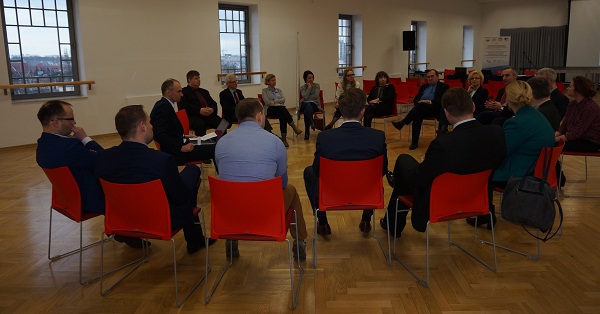
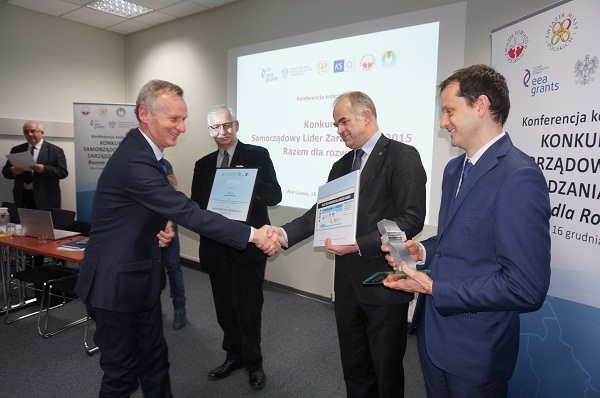
Project Leader: Assocciasion of Polish Cities
Partners: Związek Powiatów Polskich, Związek Gmin Wiejskich RP oraz Norweski Związek Władz Lokalnych i Regionalnych
Duration: 27–07-2012 -- 31-10 2016
Project value: 10 622 115 zł
Website: www.partnerstwa.jst.org.pl
Project results:
The predefined project aimed at supporting of inter-municipal and cross-sectoral partnerships seeking EEA funding from the Ministry of Development, and then providing advisory assistance the partnerships that received grants - at the project implementation stage. The project team developed a model of inter-municipal cooperation, with accompanying tools to support cooperation of diverse actors and sound financial planning. In addition, the project team identified the barriers to cooperation that exist in the legal system, and recommended specific adjustments to regulations. The new proposed legal forms aiming at facilitating such cooperation, are currently being analyzed by the government.
The predefined project was divided into two phases (I: July 2012 - April 2013 and II: May 2013 - October 2016).
- In Phase I, the project assisted 49 partnerships in preparing applicants for grants under the EEA Regional Program component operated by the Ministry of Development;
- In Phase II, the project supported 16 partnerships - grantees of MD in developing competences for inter-municipal and cross-sectoral cooperation through direct advisory assistance, training and facilitation of exchange of experience. To a lesser extent, advisory services and training were provided to the other 22 inter-municipal partnerships which received grants for the preparation of the Strategy for Urban Functional Areas under the EU Technical Assistance Operation Program,
- Throughout the period of the project monitoring of partnership development was conducted and, as a result, legislative proposals were made concerning the removal of formal and legal barriers in the implementation of partnership projects by self-government units, as well as the idea of inter-municipal and cross-sectoral cooperation and the practical tools prepared during the project.
Among other valuable products of the predefined project, two are worth mentioning because of very wide potential application. Association of Polish Cities in cooperation with the Ministry of Finance has developed the concept of a new module for official government reporting software for local government units (BeSTi @). The new software module allows to assess long-term financial balance (in terms of current expenditures) arising as a consequence of the current investment program. This will allow better planning of the investment program, without the risk of “overinvesting”, which exemplify in the financial difficulties of maintaining the newly built infrastructure. This software has already been completed by the Ministry of Finance and was made available on October 1st, 2017 to all self-government units. Due to its importance for sound financial management in local government level - it has also been listed as an important financial management tool in the Government’s National Strategy for Responsible Development.
Moreover, in the “System of Local Government Analysis” (a portal with database on the website of the Association of Polish Cities - http://www.systemanaliz.pl/dla-partnerstw, a new module was created and made available for all the existing intermunicipal partnerships in Poland. It allows, among others, to assess the pace of local development within territorial partnerships in terms of enhancing socio-economic cohesion between partners - before and after partnership cooperation. This will be an important tool for assessing the effectiveness of implementation of the Development Strategies prepared for urban functional areas.
Future of the Partnership:
A key partner of the Association of Polish Cities was the Norwegian Association of Local and Regional Authorities (KS), which provided access to knowledge about Norway's experience inter-municipal cooperation, which has over 20 years of successful tradition in Norway. 6 study visits were organized at various stages of the project. As a result, more than 80 representatives of Polish municipalities visited 23 Norwegian municipalities and counties, acquainting themselves with their experiences of cooperation with territorial self-government units.
ZMP-KS partnership has been in operation since 2007, when the first joint project for Polish local self-governments under the EEA funding was launched. Following the completion of the predefined project in Autumn 2016, we have already completed 3 further projects (dialogue between employees and self-government employers, enhancing competence in energy efficiency and renewable energy sources, use in Polish municipalities based on Norwegian experience, and finally a joint support of Polish and Norwegian local governments for Ukrainian cities to improve their energy efficiency in municipal management. It is a solid and promising cooperation, based on mutual trust and similar mission of our organization.
Likewise, the relationship between the Association of Polish Cities and the other national municipal associations (Association of Polish Counties, and Association of Rural Municipalities) is underway - we carry out further joint projects and together we represent the positions of local governments in the Joint Commission of Central and Territorial Government.
Competition’s projects
Local partnerships for economic development of the Turek district municipalities
Working on the preparation of common documentation contributed to gaining new experiences in group work and effective management of a large project. All the tasks planned in the project were successful be done. The project provided mutual knowledge about itself and made it possible to perceive problems outside its own borders. Its base was the people - the project team and the coordinators. Practices and developed standards can be used in the next jointly implemented projects as well as in the current work. It should be noted that experience with the functioning of the project team and acquired knowledge will be used in subsequent projects, either individually or in other partner configurations. Partnership can also become a tool to accomplish its own tasks - Agnieszka Dłoniak, Project’s Coordinator representing the Leader
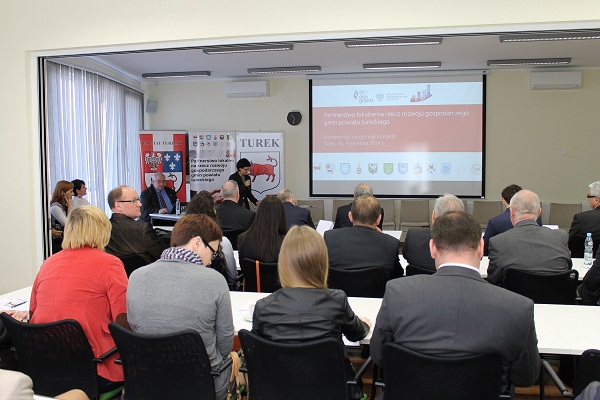
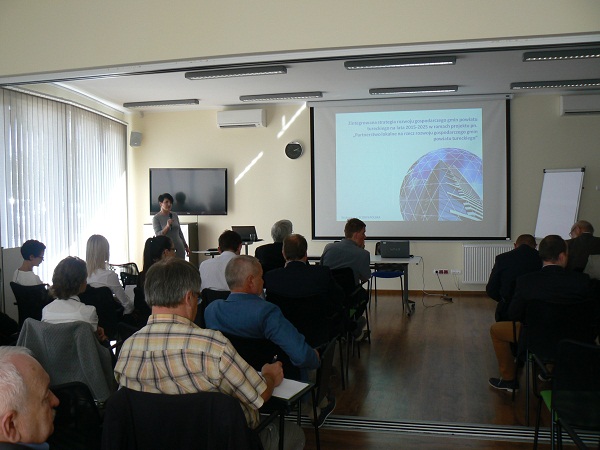
Project Leader: Gmina Miejska Turek
Partners: Powiat Turecki, Gmina Brudzew, Miasto i Gmina Dobra, Gmina Kawęczyn, Gmina Malanów, Gmina Przykona, Gmina i Miasto Tuliszków, Gmina Turek, Gmina Władysławów, Turecka Izba Gospodarcza, Stowarzyszenie Turkowska Unia Rozwoju.
Duration: 30- 01- 2014 - 31-12- 2016
Project value: 2 000 000 zł
Website: www.partnerstwolokalne.turek.pl
Project results:
The documents (Integrated Economic Development Strategy for Municipalities of Turek District for the years 2015-2025, Brand and tourist product strategy, Communication Study for the Turek District area, Spatial development concept, Documentation related to the establishment of the Loan Guarantee Fund and the Loan Fund for business entities)which have been developed show concrete ways of addressing previously identified common problems in the area of the Partnership. The documents, developed jointly with the support of specialized external entities, should be a guide for Partners, which - well read and used in practice - can contribute to resolving key problems in the area of the Partnership. Working on the preparation of joint documentation contributed to gaining new experience in group work and effective management of a large project. The co-operation network inside the project, especially at the level of coordinators in each local government, has become an important factor that can ensure the sustainability of partnership activities, regardless of the degree of formalization of co-operation in the future. Knowledge acquisition and exchange of good practice have been enabled by trainings, workshops, conferences, as well as the opportunity to participate in a study tour in Norway attended by partners.
Future of the Partnership:
The co-operation network inside the project, especially at the level of coordinators in each local government, has become an important factor that can ensure the sustainability of partnership activities, regardless of the degree of formalization of co-operation in the future. Knowledge acquisition and exchange of good practice have been enabled by trainings, workshops, conferences, as well as the opportunity to participate in a study tour in Norway attended by partners. The project provided mutual knowledge about itself and made it possible to perceive problems outside its own borders. Its base was the people - the project team and the coordinators. Practices and developed standards can be used in the next jointly implemented projects as well as in the current work. It should be noted that experience with the functioning of the project team and acquired knowledge will be used in subsequent projects, either individually or in other partner configurations. Partnership can also become a tool to accomplish its own tasks.
Warsaw’s Suburban Garden Tri-city – improvement of coherence of the Warsaw’s Sub-urban Tri-City through cooperation in the field of social policy, development of public space, water management and transport
When you take actions for the benefit of residents, you often need to exceed the borders of your own municipality. Brwinów, Milanówek and Podkowa Leśna have passed in recent years from the stage of “good neighborhood” to the stage of “good partnership”, where we work together to plan roads and lanes connecting us to create a transport plan for our region, develop comprehensive solutions for water and irrigation problems and create social strategies. The Warsaw’s Suburban Garden Tri-city is the common space which is today filled in with a new quality and where we see future prospects – Arkadiusz Kosiński, Mayor of the Brwinów Municipality
Milanówek, Brwinów and Podkowa Leśna are small Warsaw’s suburban towns where you want to live, rest and prosper. All three cities have a lot in common and we have also similar problems. Looking back in time, joining forces in pursuit of the goals was a good step. Our partnership is the area for mutual exchange of experience and provision of advisory support. The relationship among the towns has been also intensified. Our residents enjoy common cultural offers and are eager to visit each other – Wiesława Kwiatkowska, Mayor of the City of Milanówek
No municipality is able to exist within its own administrative boundaries only, and it is impossible to do everything by yourself. The Warsaw’s Suburban Garden Tri-city helped us all to understand our faults and our advantages. The partnership that we have formed let us realize the differences that can be divisive, but the same difference did not interfere with the joint efforts. The projects we are about to accomplish together some day will come to an end, but the cooperation mechanism will remain for the years to come – Artur Tusiński, Mayor of the City of Podkowa Leśna
The time has come for the neighboring municipality to be seen as a partner in joint efforts to improve the quality of life of the whole community in the area and not as a competitor to funds, e.g. the EU funds. The trust of the partners and mutual sharing of experience in solving problems on their own areas are the basis of a good partnership. Social coherence is a precondition for economic growth, in which all residents participate and benefit from – Tadeusz Marczyk, Project Manager
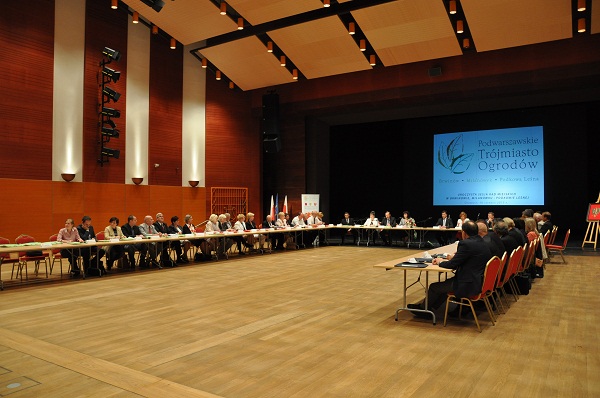
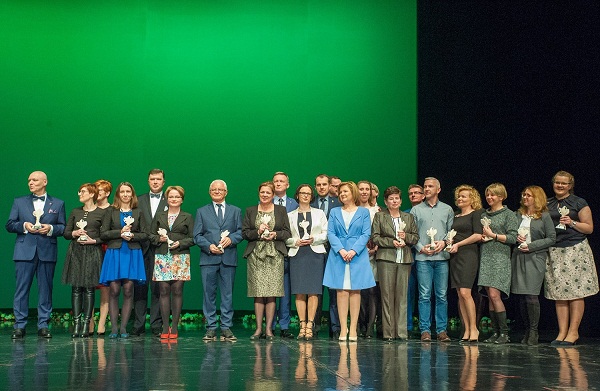
Project Leader: Gmina Brwinów
Partners: Miasto Milanówek, Miasto Podkowa Leśna, Powiat Pruszkowski, Powiatowe Centrum Pomocy Rodzinie w Grodzisku Maz., Powiatowy Urząd Pracy w Pruszkowie, Powiatowa Stacja Sanitarno-Epidemiologiczna w Pruszkowie, Centrum Doradztwa Rolniczego w Brwinowie, Podkowiańska Wyższa Szkoła Medyczna oraz Wyższa Szkoła Teologiczno-Humanistyczna w Podkowie Leśnej, Komenda Powiatowa Policji w Pruszkowie, Państwowa Straż Pożarna w Grodzisku Maz. i w Pruszkowie, straże miejskie w Brwinowie i Milanówka, Państwowy Zespół Ludowy Pieśni i Tańca "MAZOWSZE", Muzeum im. A. i J.Iwaszkiewiczów, Warszawska Kolej Dojazdowa Sp. z o.o., oraz 3 ośrodki kultury, 3 biblioteki, 3 szpitale, 3 ośrodki pomocy społecznej, 2 parafie oraz aż 20 organizacji pozarządowych z terenu partnerstwa.
Duration: 19- 03- 2015 - 30-04- 2017
Project value: 2 485 383 zł
Website: http://www.trojmiasto-ogrodow.eu/
Project results:
The joint works resulted in the development and adoption by the Municipal Councils of the three municipalities of cohesive strategic and operational (sectoral) documents for the Warsaw’s Sub-urban Garden Tri-city Functional Area, which were positively evaluated by expert, and included:
- The Common Framework for Strategic Development of the Warsaw’s Sub-urban Garden Tri-city Functional Area;
- The program and spatial concept of comprehensive management and protection of water relations in the Warsaw’s Sub-urban Garden Tri-city municipalities (so called: water strategy);
- The transport study covering all passenger and freight transport in the Warsaw’s Sub-urban Garden Tri-city area (so-called: transport strategy);
- The strategy for development of green areas in the Warsaw’s Suburban Garden Tri-city, including preparation of an inventory of natural resources and concepts of new plantings (so-called: greenery strategy);
- The integrated strategy for solving social problems and supporting the development of civil society in the Warsaw’s Suburban Garden Tri-city (so-called: social strategy);
- The social marketing plan addressed to the residents of the Warsaw’s Suburban Garden Tri-city, intended in particular to enhance: identification of the residents with their place of residence, mutual integration, activeness, security and implementation of pilot activities.
Specific directions and strategic priorities were identified in each of the above fields and key projects were listed for implementation in the perspective of 7-10 years. A list of specific implementation measures was selected, design and cost documentations were prepared and building permits for key projects were obtained, among others, for construction of a school with a kindergarten in Parzniew, construction of a communal cemetery in Żółwin, construction of roads in the industrial area of Parzniew. In addition, the design and cost documentation was prepared for drainage of the local river watershed with retention of rainwater. Designs of roads and bicycle lanes connecting centers of the municipalities and rural areas were developed. The documentation prepared under the Project is currently used when applying for external funding.
Future of the Partnership:
At the meetings of the Project’s Partners, which were convened at least once a quarter, the Project's achievements were discussed on an on-going basis and solutions for the current cooperation between Partners were worked out. It is also worth mentioning that the partnership established under the Warsaw’s Suburban Garden Tri-City was recognized by the Union of Polish Cities at the conference in December 2015, during which the Warsaw’s Suburban Garden Tri-city partnership was honored in the competition “Local Government Leader in Management 2015 - Together for Development”.
The cooperation on these strategic documents, deepened by cross-sectional social research for the Warsaw’s Suburban Garden Tri-city area and Focus Group Interviews made a significant contribution to development of trust among the leaders of the municipalities, professionals and councilors who met at the joint sessions. This cooperation resulted in the establishment of the Warsaw’s Suburban Garden Tri-city Association which aims to facilitate the accomplishment of common goals in the future. Setting the institutional frames for this cooperation will enhance the sustainability of cooperation and will provide the systemic support in the process of obtaining the external funds. Not only each municipality separately, but also the new Association will be able to apply for further grants.
The Zagłębie Linear Park – revitalization of the functional area of the Przemsza and Brynica Rivers
The most important result of the project is the change of the image of post-industrial the cities with participation and full involvement of the public. The effect of the project will arise comprehensive recomposition of the green areas of the Przemsza and Brynica river valleys.How will the partnership work in the future? The partnership is being developed in other projects. Our cooperation is based on agreement. This is a form that is sufficient but at the same time gives measurable effects – Katarzyna Jurczak-Klocek, Project menager
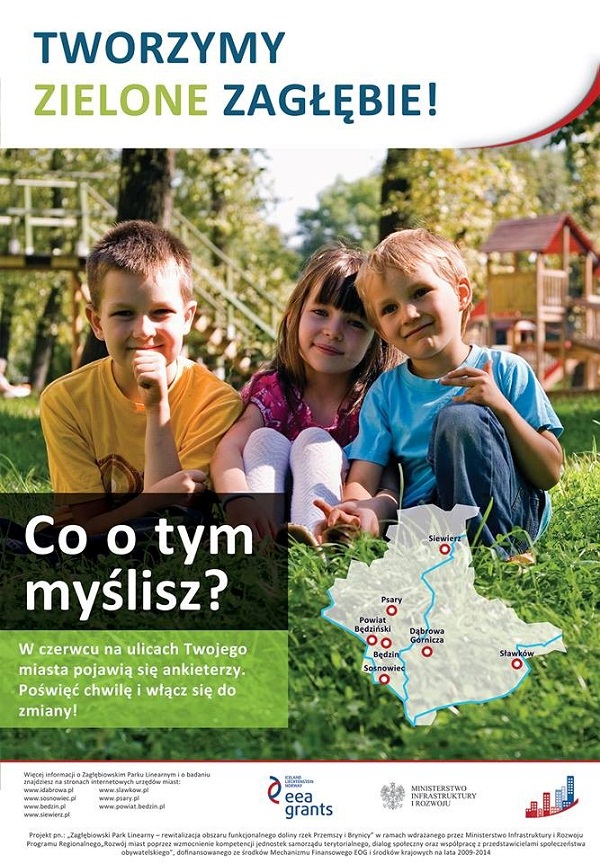
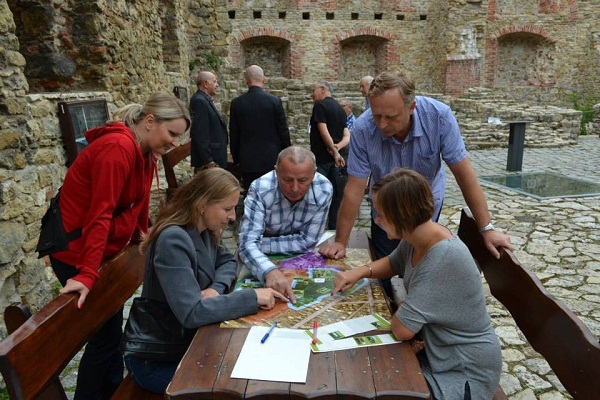
Project Leader: Dąbrowa Górnicza
Partners: Powiat Będziński, gmina miejska Będzin, Sosnowiec, gmina miejska Siewierz, gmina miejska Sławków, Psary, Stowarzyszenie Forum dla Zagłębia Dąbrowskiego z siedzibą w Będzinie; Stowarzyszenie Inicjatyw Społecznych z siedzibą w Sosnowcu; Stowarzyszenie Ziemia i My – Centrum Edukacji Ekologicznej z siedzibą w Dąbrowie Górniczej; Polskie Towarzystwo Turystyczno-Krajoznawcze (Oddział w Dąbrowie Górniczej); Stowarzyszenie Inicjatyw Kulturalno-Ekologiczno-Sportowych ODFRONTU z siedzibą w Dąbrowie Górniczej; Speleoklub Dąbrowa Górnicza; Stowarzyszenie Reumatyków i ich Sympatyków „SOMA” z siedzibą w Dąbrowie Górniczej; Stowarzyszenie „Projekt Dorotka” z siedzibą w Będzinie; Towarzystwo Przyjaciół Grodźca z siedzibą w Będzinie, Zagłębiowska Izba Gospodarcza, Wyższa Szkoła Planowania Strategicznego w Dąbrowie Górniczej.
Duration: 05.02.2014 - 31-08- 2016
Project value: 2 685 375 zł
Website: www.parklinearny.pl
Project results:
The measurable effects of the project are its products: The Institutional Partnership Development, a strategic document specifying the organization, functioning and principles of cooperation of the Partnership; The Functional Area Strategy – Green Infrastructure of Zagłębie Dąbrowskie, document which specifies coherent aims and create an outline of the future cooperation for the creation of a joint initiative – the Zagłębie Linear Park of the Przemsza and Brynicy River Valleys; the design documentation for Zagłębie Linear Park. Apart from measurable results of the project implementation, which are strategic and planning documents, an important success, the Partnership is jointly applying for and receiving funding under the Regional Operational Program of the Silesian Voivodeship for the years 2014-2020. Linear Park project is a key project important for the development of the Śląskie Province.
Future of the Partnership:
The partnership is being developed in other projects. Our cooperation is based on agreement. This is a form that is sufficient but at the same time gives measurable effects.
NORDA – The Northern Growth Pole
As a leader and the biggest Partner of NORDA – The Northern Growth Pole project at the same time, we are very satisfied with effects of its realisation. I think I can speak for all the Partners. We are pleased not only with the achievement of planned results, i.e. strategic and operational documents formulated and adopted to implementation, created tools facilitating coherent presentation of investment offers and attraction of investors as well as undertaking common effective actions in the area of seaside region promotion. Liberation and consolidation of need of cooperation and sense of community among people from individual communes, commited to the project realisation both directly and indirectly, is also significant. This community concerns interests and conviction that wider cooperation in many fields of local governance produces an effect much better than particular actions undertaken by individual local government units. We will still search to broaden posibilities of jointly undertaken actions and to find solutions to problems regarding all the partners and chosen gr oups of entities coopeating within the NORDA Metropolitan Forum of Commune Heads, Mayors, Presidents and Starostes’ - Katarzyna Gruszecka-Spychała, Deputy Mayor of Gdynia
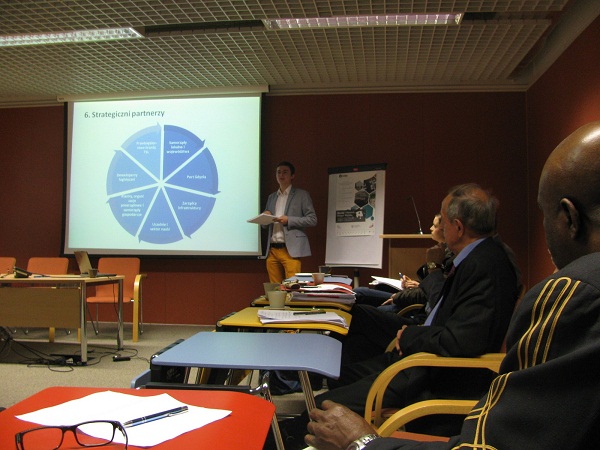

Project Leader: Gmina Miasta Gdyni
Partners: Gmina Cewice, Gmina Choczewo, Gmina Miasta Helu, Gmina Miasta Jastarni, Gmina Kosakowo, Gmina Krokowa, Gmina Liniewo, Gmina Luzino, Gmina Miasta Lęborka, Powiat Lęborski, Gmina Miasta Łeby, Gmina Łęczyce, Gmina Miasta Pucka, Gmina Puck, Gmina Miasta Redy, Gmina Miasta Rumi, Gmina Szemud, Gmina Miasta Wejherowa, Gmina Wejherowo, Gmina Miasta Władysławowa, Akademia Morska w Gdyni, Polska Izba Spedycji i Logistyki, Liga Ochrony Przyrody, Polskie Towarzystwo Turystyczno – Krajoznawcze, Gmina Gniewino (w charakterze obserwatora).
Duration: 05-02-2014 - 30-04-2017
Project value: 2 587 060 zł
Website: www.projekt.nordaforum.pl
Project results:
Thanks to the NORDA – Northern Growth Pole Project partners were able to realize a number of actions to strengthen cooperation both among particular local government units and among representatives of local governments, representatives of civil society as well as business organizations, including elaboration of: Sustainable Development Strategy for Coastal Growth Area NORDA 2020 with a 2050-year perspective, Operational Programmes in the field of economic development, spatial development and land management as well as promotion of the functional sub-area CGA NORDA 2020 with a 2050-year perspective, Sustainable Development Strategy for the Logistic Valley functional sub-area 2020 with a 2050-year perspective, Operational Programmes for economic development, spatial development, land management and transport development of the Logistic Valley functional sub-area 2020 with a 2050-year perspective, Brand strategy and marketing communication plan of the Coastal Growth Area NORDA, The Norda Memorandum. Multi-industry concept was designed together with a feasibility study and environmental analysis for construction of the road connecting the seaport of Gdynia with the national road network. Databases of investment offers relating to land and real estate from the functional areas: Logistic Valley and Coastal Growth Area NORDA were also created.
Future of the Partnership:
The NORDA Forum is not a society or an association of communes – it is created by a group of people who believe that joint efforts sometimes bring better effects than individual actions and by those to whose hearts a fortunate development of their communes and district authorities are close. However, formalising a cooperation undertaken within the NORDA Forum is currently not being considered, as the carried out undertakings and rich experience gained thanks to the current cooperation seem to confirm that the most important factor determining success of the fulfilment of a particular task is wilingness to cooperate shared by all the involved parts and, above all, constructive operations of individual persons.
INTIS. Integration and Synergy. Strategy for the Development of Gdańsk Metropolitan Area 2014-2030
When we established the metropolitan association back in 2011, we were convinced that the challenges connected to the globalisation and urbanisation processes demanded the initiation of joint actions and cooperation between self-governments and the national government, business, science and non-governmental organisations. One of the means to achieve that goal was the metropolitan area development strategy. Since adopting that document, we are aware of our priorities. Every village head, mayor or county official should not only look after the interests of their commune or municipality, but also see things from a broader perspective. Cooperation and coordination of actions in a metropolis is the only possible development direction. Thanks to the implementation of the project and the shared strategy, we are able to convince more and more people and institutions of that idea - Paweł Adamowicz, Mayor of Gdańsk, Chairman of the Gdańsk-Gdynia-Sopot Metropolitan Area Association

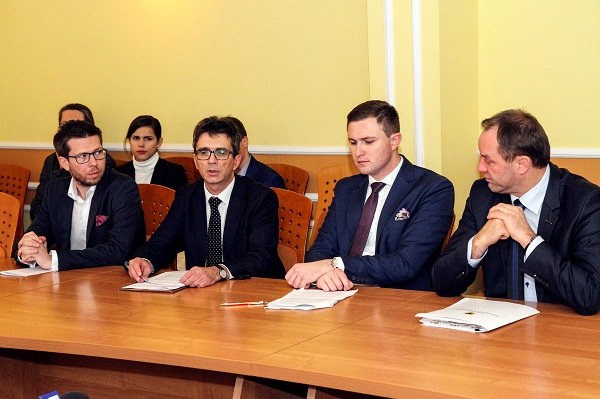
Project Leader: Stowarzyszenie Obszar Metropolitalny Gdańsk – Gdynia - Sopot
Partners: Allcon Investment sp. z o.o., Fido Intelligence sp. z o.o., Flextronics sp z o.o., Forum Rozwoju Aglomeracji Gdańskiej, Gdańska Fundacja Innowacji Społecznej, Gdańska Organizacja Turystyczna, Gdański Klub Biznesu, Gdański Uniwersytet Medyczny, Grupa Kapitałowa LOTOS, InnoBaltica sp. z o.o., Instytut Kultury Miejskiej, Interizon – Pomorski Klaster ICT, Olivia Business Centre, Politechnika Gdańska, Port Lotniczy Gdańsk, Pracodawcy Pomorza, Stowarzyszenie Dobra Edukacja, Torus sp. z o.o., Uniwersytet Gdański, Wojewoda Pomorski, Zarząd Portu Morskiego w Gdańsku S.A., Zrzeszenie Kaszubsko-Pomorskie.
Duration: 30-01-2014 - 30-04-2017
Project value: 2 158 450 zł
Website: http://www.metropoliagdansk.pl
Project results:
Due to the fact that the General Meeting of the OMG-G-S Members adopted the OMG-G-S Strategy until 2030, based on a complex diagnosis of the social and economic situation, the Association possesses a document that, within the next decade or so, will determine development directions for the metropolis and cooperation between the partners. In the context of spatial development of the area, the 2030 Gdańsk-Gdynia-Sopot Metropolitan Area Spatial Organization Plan, drawn up with the use of an expert opinion prepared as part of the INTIS project, concerning the availability of investment areas and the prospects for housing development in the OMG-G-S, is equally important. The fact that the OMG-G-S, as the first metropolis in the country, currently possesses a complex document package, demonstrates the new quality of metropolitan cooperation. Apart from the OMG-G-S Strategy until 2030, these documents are: the Integrated Territorial Investments Strategy, Transport and Mobility Strategy, and the Low-emission Economy Programme. The indicated planning documents, which include a broad range of subjects, ensure that many stakeholders are engaged in their implementation and the development of further undertakings on the metropolitan scale.
Future of the Partnership:
During the implementation of the project, the composition of the partnership was significantly extended (e.g. with Gdynia and Wejherowo), and cooperation with the Pomeranian Voivodeship Self-government and the Pomeranian Office for Regional Planning was established within the scope of developing the OMG-G-S Spatial Organization Plan. Cooperation within the partnership is continuously developing, and the present structures and inter-institutional contacts ensure that it will become more intense in the next years. Since 2016, the OMG-G-S has functioned as the Intermediate Body in the process of implementing Integrated Territorial Investments. The Association also supports the establishment of a metropolitan association within the boundaries of the OMG-G-S.
Functional Area Partnership for strengthen the development and economic and social cohesion of Leszczyńska Agglomeration
Still in the process of the project the first investment of building and rebuilding roads and bicycle routes started for which the technical documentation was prepared in the OFAL project. The participation in open consultation meetings gave the inhabitants of the functional area the possibility to learn about the construction concept and to express own comments about the planned investment. Mutual trust among the OFAL Partners has also been deepened significantly and the hitherto cooperation with all the Partners has grown stronger. In order to continue the idea of the cooperation and to give the chance to implement the strategic goals and the particular tasks that have been worked out, it is necessary to continue the regular meetings of the mayors from the self-governments building the Partnership - Łukasz Borowiak, Mayor of Leszno

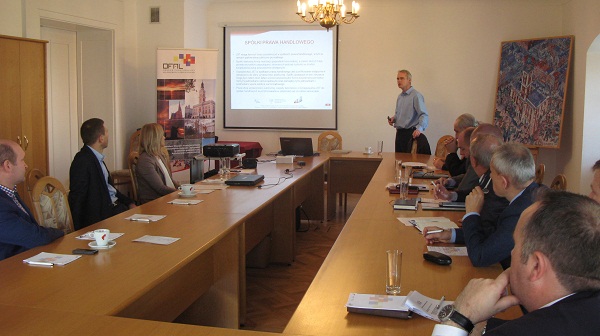
Project Leader: Miasto Leszno
Partners: Starostwo Powiatowe w Lesznie, Gmina Krzemieniewo, Gmina Lipno, Gmina Osieczna, Gmina Rydzyna, Gmina Święciechowa, Gmina Wijewo, Gmina Włoszakowice, Gmina Przemęt, Państwowa Wyższa Szkoła Zawodowa w Lesznie, Leszczyńskie Centrum Biznesu, Regionalna Izba Przemysłowo-Handlowa, Organizacja Turystyczna Leszno – Region.
Duration: 31-01-2014 - 30-04-2017
Project value: 2 654 120 zł
Website: www.ofal.leszno.pl
Project results:
Based on developed strategic documents a few important investments have been chosen which were key elements for the development of the area and for which the technical documentation has been prepared. A set of documents was worked out which contained of 16 separate projects. These documents concern the investment carried out in the communities of the Partners and the Leader and have significance for the whole development of the functional area. They include construction and reconstruction of county roads, pedestrian-bicycle routes in order to improve the consistency of communication, as well as the revitalization of the Market Square in Leszno with modernization of the Town Hall building which will improve the attractiveness of this place. The implementation of the investment by respective Partners will contribute to an improvement in the whole region. As a result of the prepared documentation the Leader has implemented reconstruction of streets in the Town of Leszno. At present the reconstruction of national road no. 12 and the construction of the new road connecting the road S5 with a viaduct are in progress. The partners are carrying out the construction of pedestrian-bicycle routes for which they have received funding from the European Union.
Future of the Partnership:
The cooperation of the partnership will be continued. Meetings of the local governors and mayors will be organized. It will give us a chance for continuous fueling and tightening of the cooperation on the fields worked out (economic development, communication and revitalization), as well as on other areas important for the development of the region (e.g. culture, education, common provision of services, environment protection etc.). Self-governments – partners see the necessity of cooperation and making important decisions which take into consideration the broader context of the functioning of the administrative unit. For the partners it is important to reach the effect of synergy, complementarity and complexity of undertaken activities. The previous cooperation proved that such activity is beneficial and brings better effects for the whole region and its inhabitants.
Nysa Partnership 2020
Implementation of the project has influenced creation of supra-local relations between local and county government entities. While creating a management and co-operation model, an emphasis was put on balancing communication procedures and project effects. The proposed channels for communication and information distribution could not have led to creation of a poorly flexible administrative structure of the partnership that would hinder both individual Partners and the entire partnership from reacting effectively and adjusting to changing needs and conditions. It was important that the communication structure was flexible and adapted to the needs of the Partnership of Nysa 2020 and the specificity of the entities creating it (local government entities). This approach has enabled smooth establishment of the Southern Subregion Association - Kordian Kolbiarz, Mayor of Nysa

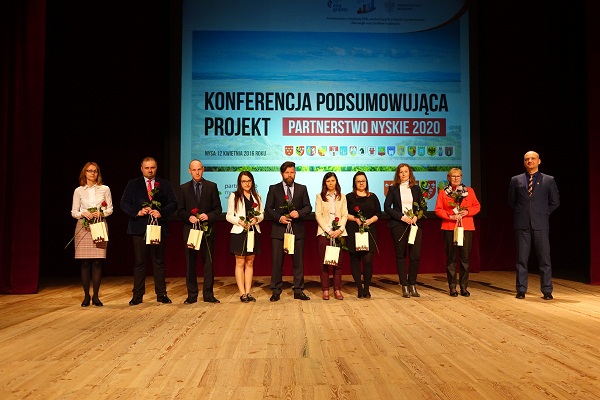
Project Leader: Gmina Nysa
Partners: Powiaty: Głubczycki, Nyski, Prudnicki i Gminy: Biała, Branice, Głubczyce, Głuchołazy, Grodków, Kietrz, Korfantów, Otmuchów, Paczków, Prudnik, Lubrza, Łambinowice, Skoroszyce.
Duration: 06-04-2014 - 30-04-2016
Project value: 2 669 830 zł
Website: www.partnerstwo-nyskie2020.pl
Project results:
Thanks to implementation of the project the Partnership of Nysa 2020, the most important goal has been achieved – that is permanent and regular system of work of local government leaders – who meet together since 2015, already within the established Southern Subregion Association.Based on broad participation and consultation with inhabitants, civil society representatives and organizations of businessmen, final strategic documents for the entire Functional Area have been developed, i.e.: Strategy for Development of Functional Area the Partnership of Nysa 2020, Strategy for Transport Development of the Functional Area the Partnership of Nysa 2020, Strategy for Labour Market of the Functional Area the Partnership of Nysa 2020, Strategy for Social Development of the Functional Area the Partnership of Nysa 2020, and an operational document - Concept of Integrated Public Transport System for Development of the Functional Area the Partnership of Nysa 2020. The adopted strategic documents and the concept allowed the Partners to implement jointly supra-local activities with the financial support from the European Union. Thanks to the developed strategic documents and the concept, 3 projects have been submitted to the Regional Operational Program of the Opole Voivodeship for the years 2014-2020.
Future of the Partnership:
The worked out model of cooperation has translated into the formalization of the “Partnership of Nysa 2020” structure. On February 9th, 2016 in the County Museum in Nysa a founding meeting of the SOUTH SUBREGION Association was held. The Southern Subregion Association creates a stable structure for division of activities and responsibilities between local authority partners in the area. The experience gained in the project and, above all, the confidence, are “added” value not only in the form of regular exchange of knowledge and experience between local authorities, but also make possible more effective relationships with the authorities of the voivodeship, neighbours and other entities. The strength of the common voice of the Functional Area is much greater than single postulates, especially with regard to the authorities that program regional development. Joint cyclical meetings within the Association allow for joint planning of further partner projects involving interested entities and updating knowledge on the functioning of local government entities. Planned further actions will have an overall dimension for all partners, and partial - addressed to entities interested in a selected thematic scope. The partnership established for the needs of the EEA project has also become a platform for more effective absorption of external funding sources for development projects.
Master Plan for Poznań Metropolitan Railway
The completed Master Plan project for PKM has served to strengthen the integration and to create substantive solutions very well. I consider it a good outcome that the European Economic Area funds were implemented in such a wide partnership and that they were reasonably utilized for the forthcoming actions of the project. Public transport based on rail is the basis for the development of the Poznań Metropolis area. The institutional development of the partnership and the continuation of cooperation between the self-governments – the partners of the project – resulted in a synergistic effect as further joint documents have been prepared: the Integrated Territorial Investments Strategy (ZIT), the Low-carbon Economy Plan, the Sustainable Urban Mobility Plan, or the Poznań Metropolis Area Development Directions Concept - Piotr Wiśniewski, The Poznań Metropolis Association Office Director
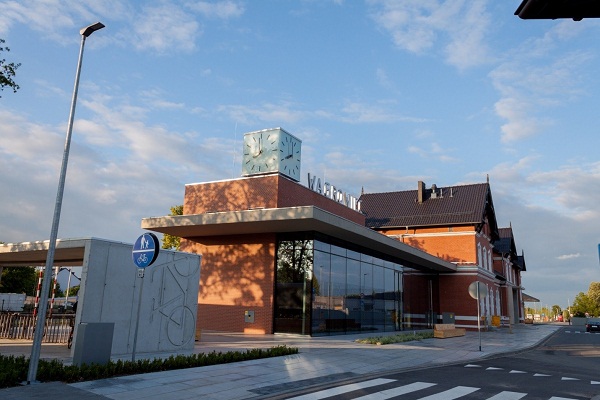

Project Leader: Stowarzyszenie Metropolia Poznań
Partners: projekt realizowany w partnerstwie z Województwem Wielkopolskim, gminami:Buk, Czerwonak, Dopiewo, Kleszczewo, Komorniki, Kostrzyn, Kórnik, Luboń, Mosina, Murowana Goślina, Oborniki, Pobiedziska, Poznań, Puszczykowo, Rokietnica, Skoki, Stęszew, Suchy Las, Swarzędz, Szamotuły, Śrem, Tarnowo Podgórne, Czempiń, Rogoźno, Środa Wielkopolska, Wągrowiec, miastem Wągrowiec, Powiatem Poznańskim, PKP Polskimi Liniami Kolejowymi S.A., Przewozami Regionalnymi sp. z o.o, Centrum Badań Metropolitalnych Uniwersytetu im. A. Mickiewicza, Kolejami Wielkopolskimi Sp. z o.o., Stowarzyszeniem Inżynierów i Techników Komunikacji RP Oddział w Poznaniu, Towarzystwem Urbanistów Polskich Oddział w Poznaniu, Stowarzyszeniem Sołtysów Województwa Wielkopolskiego, Stowarzyszeniem My – Poznaniacy.
Duration: 31-01-2014 - 30-04-2017
Project value: 1 907 609 zł
Website: http://www.kolej.metropoliapoznan.pl/strona_glowna
Project results:
The concept of the integrated public transport based on Poznań Railway Node railway lines was created as a commission from the project's partner – Greater Poland Voivodeship. The product is a main tool for taking strategic decisions concerning PKM's launch and functioning. The concept was a base document used by further versions of the Master Plan project for PKM. The concept of building functional interchanges in order to increase their availability and to offer services complimentary with public transport was developed for the so-called "long distance" and included 64 facilities. The development of local area master plans together with the concepts of modernizing road systems in areas surrounding PKM stops and stations suggested by municipalities was intended for self-governments for which the railway areas were previously "closed" and for which municipalities had no rights to adopt mpzp projects. Preparing inventory of existing station facilities with special attention to facilities under conservation protection - the product was developed for 33 station facilities, some of which are stations already taken over or are assumed to be soon taken over by self-governments. Additional action "The concept of facilitating rail transport in Poznań agglomeration by introducing rapid urban rail on the Poznań cargo bypass" was passed to partners of the PKP PLK SA project and to Poznań self-government. Revitalization of cargo bypass included in the National Railway Programme reserve list is a subject of cooperation between listed partners that aims to use the bypass for passenger traffic in the future. Second additional action "Preliminary feasibility study for Project named Building railway link between Poznań Main Station and Poznań Ławica Airport as a part of Poznań Metropolitan Railway (PKM)" will be used by project partners – Poznań City self-government and Poznań Ławica Airport Sp. z o.o.
Future of the Partnership:
During the project's execution, partnership gained 5 new self-government partners from the so-called further circle. The core of the partnership is comprised of municipalities belonging to Poznań Metropolis Association. The cooperation during the project's execution strengthened self-governments relations, especially in execution of Poznań Agglomeration Development Strategy and Integrated Territorial Investments Strategy (ZIT). Notwithstanding the lack of a metropolitan act, there is a cooperation e.g. in the areas of spatial planning, parking policies, self-governments participation in electric energy purchasing groups, and lately gas - for self-government units. Municipalities take active part in conferences and trainings organised by Poznań Motropolis Association. Together, Low-carbon Economy Plans were developed, as well as Sustainable Urban Mobility Plans for Poznań Urban Functional Area. Informal acquisition of new partners concerns now establishing agreements about co-financing additional railway links beyond the area of the project's partnership.
Provision of water to residents of the Olkusz area following the cessation of deposit exploitation by the Bolesław Mine and Metallurgical Plant
Thanks to the project implementation, the inhabitants have increased their awareness of the water supply of their farms after the mining activity ceased. Partners have tools (documents, analysis) that will make the process of implementing the necessary changes more effective - Michał Latos, Press Officer of the Municipal Office of Olkusz
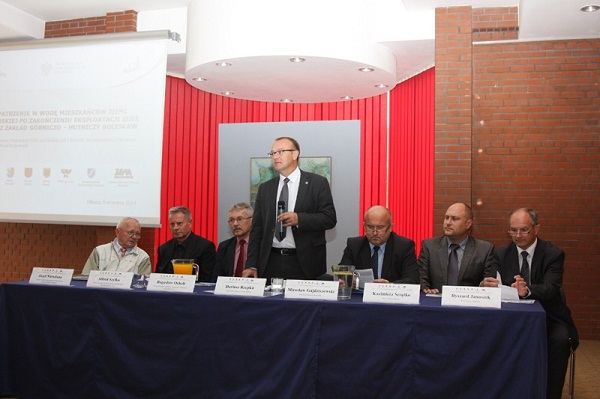
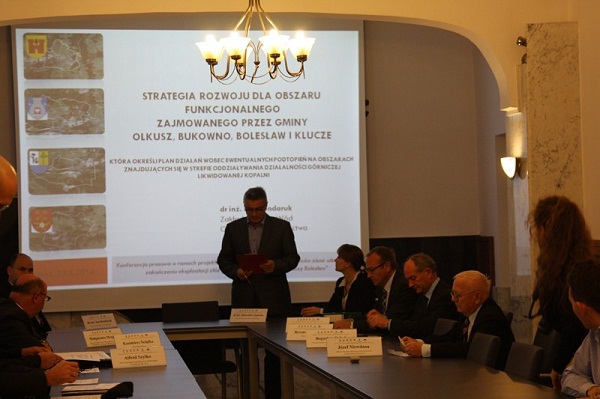
Project Leader: Olkusz
Partners:Miasto Bukowo, Gmina Klucze, Gmina Bolesław, Przedsiębiorstwo Wodociągów i Kanalizacji, Stowarzyszenie „Szansa Białej Przemszy”; Zakłady Górniczo-Hutnicze "Bolesław" S.A
Duration: 04-02-2014 - 30-04-2017
Project value:1 731 796 zł
Website: www.olkuszwoda.pl
Project results:
This project was aimed to solve all problems connected with discontinued mining operations. Its implementation allowed the Communes to analyze the consequences of the restructuring, prepared a social action strategy (unemployment), as well as plans of measures to be adopted in the case of flooding, along with designed documents and cost estimates relating to alternative sources of water. Thanks to the elaboration of the document: An analysis of the social consequences of restructuring the "Bolesław" Mine and Metallurgical Plant, and determination of countermeasures, individual partners within the framework of their municipal policies have been given the opportunity to introduce instruments to mitigate and counteract the negative effects of unfavorable phenomena. An integrated plan of action of local and social institutions was established to provide effective assistance.
The study under the name Strategy for development of a functional area covering the communes of Olkusz, Bukowno, Bolesław and Klucze, for the purpose of determination of an action plan to be implemented in the case of potential flooding in areas within the impact zone of the mining activities of the liquidatedmine was intended to define the solution to the problem related to the liquidation of part of ZGH" Bolesław "S.A. such as the occurrence of floods by determining the extent of impact, results, strategy of action in the public service area provided by all entities irrespective of the form of organization.
Future of the Partnership:
Thanks to the project implementation, the inhabitants have increased their awareness of the water supply of their farms after the mining activity ceased. Partners have tools (documents, analysis) that will make the process of implementing the necessary changes more effective.
Partnership of Government Organizations from Koszalin Functional Area as an opportunity to strengthen developmental potential of the region
All project partners have a common goal - to strengthen the region's development potential. In order to achieve this goal, the City of Koszalin developed the project-cost documentation for four major investments, modeled on the assumptions of the Sectoral Programme for Economic and Tourism Development of KFA, i.e. the revitalization of the narrow gauge railway, the revitalization of the historic urban parks, the development of the Dzierżęcinka River from the Wodna Dolina to the existing yacht marina and the development of the Chełmska Hill along with the foothills. In the investment process development of documentation is one of the most important steps in the way of investment. This is evidenced even by the fact that some of the investments covered by the aforementioned documentation are already in progress (eg. bicycle routes within the development of the Dzierżęcinka River). While some are waiting for the launch of the investment. This is the case Chelmska Hill, where the project is planned to start in the third / fourth quarter of this year. The investment related to the revitalization of the narrow gauge railway is in the evaluation phase for EU co-financing. We are therefore delighted that, such in a relatively short time after the EEA project completion, developed documentation is successively implemented in the form of investment activities. On the other hand, as a project partner, we solidarity count on that all partners will have the opportunity to make their investments successful, thereby contributing to the goals and objectives of the EEA project. Returning to the idea of the project - looking in terms of comprehensive, the "added value" of the project is its broad representativeness, which proves the high maturity of the partners and a deep understanding of the advantages and benefits of mutual cooperation. Awareness of own development values is an element that characterizes all the actors involved in the project, and in conjunction with the willingness to cooperate, is a proud showcase of the EEA project - Urszula Miller – Grzybowska, Director of the Department of Development and Territorial Cooperation of the Municipal Office in Koszalin
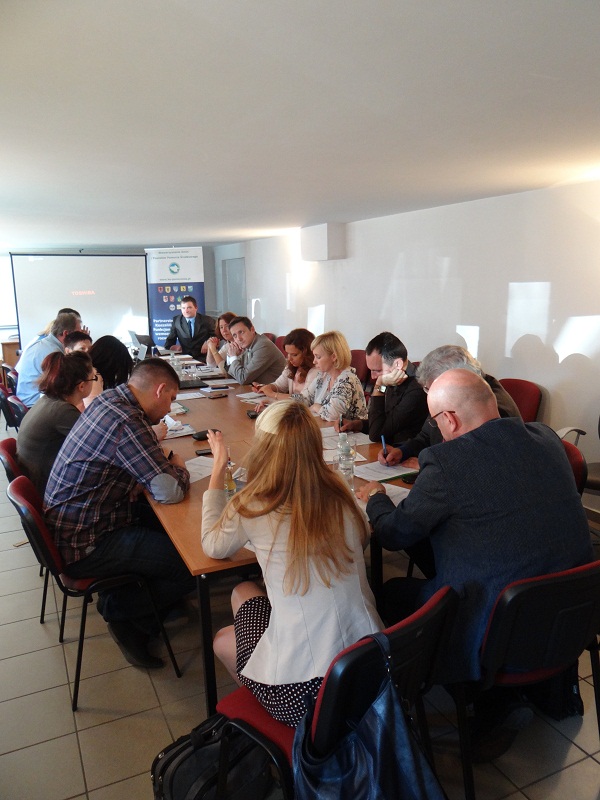
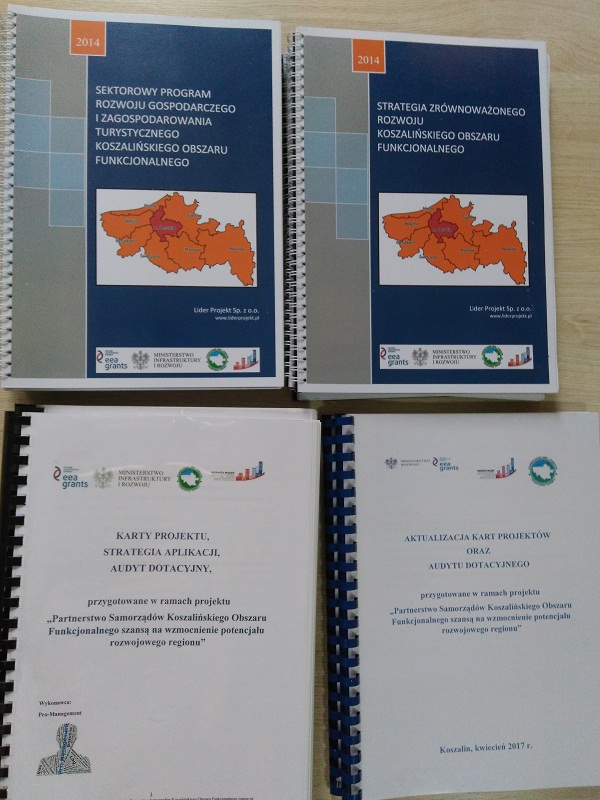
Project Leader: Stowarzyszenie Gmin i Powiatów Pomorza Środkowego
Partners: Miasto Koszalin, Gmina Będzino, Gmina Manowo, Gmina Mielno, Miasto i Gmina Polanów, Gmina i Miasto Sianów, Powiat Koszaliński, gmina Biesiekierz i gmina Świeszyno oraz Fundacja Środkowopomorska Grupa Działania i Koszalińska Izba Przemysłowo – Handlowa.
Duration: 30-01-2014 - 30-04-2017
Project value: 2 692 970 zł
Website: www.ko-pomerania.pl
Project results:
The main objectives of the project included in the application form in the fields of the following areas: strengthening partnerships, building local links, sustainable socio-economic development of Koszalin Functional Area, improved quality of life, efficiency of public space have been achieved by the various project activities. The results of the project directly fitted in new institutional arrangements aimed at territorial development. Project products in the form of the Strategy for Sustainable Development of Koszalin Functional Area and Sectoral Programme for Economic and Tourism Development of KFA were the starting point and source of knowledge for the development of the Strategy for Integrated Territorial Investments of Koszalin - Kolobrzeg - Bialogard Functional Area. The sectoral programme was the basis for the development of 26 technical documents for the investments contained therein, affecting the tourist development of the region and improving the living conditions of KFA residents. The investment projects selected during the project partners' meetings and social consultations were reflected in the ITI KKBFA Strategy, thus ensuring the financing from the Regional Operational Program of the Zachodniopomorskie Voivodship for the years 2014-2020. Furthermore, prepared within the project Application Strategy with grant audit and project cards sets the possibility of obtaining funds for investment projects, based on the prepared technical documentation. The developed products are available and used on an equal rules by each Partner in accordance with the principle of equality and their purpose. Self-government units participating as Partners in the project are simultaneously in the structure of the KKBFA. Investments made on the basis of strategic and sectoral documents as well as technical documentation will directly affect the inhabitants of the individual municipalities and the entire Koszalin Functional Area. The consequence of the technical documentation prepared within the project, the availability of funds under the ROP 2014-2020 and the funds guaranteed under the ITI KKBFA are signed contracts for co-financing, among others: hydroelectric trail, Chelmska Hill development, interchange center and bicycle paths in Mielno, Polanow, Sianow. The above also made it possible for the selected tasks to undertake the investment process.
Future of the Partnership:
The developed cooperation mechanisms and substantive actions that were the subject of the project were reflected in the framework of Koszalin - Kołobrzeg - Bialogard Functional Area and strengthened the belief that comprehensive and common actions have greater possibilities of effective influence on the development of a specific area. KKBFA is a formalized body with a much larger number of local governments, which in turn has a negative impact on the widening of current membership of the Association of Communes and Districts of Middle Pomerania Region acting as project leader of the EEA. It is important that the partnership does not end its activities with the completion of the project. Partnership within the Association, in various configurations, may take the form of informal co-operation, in particular as a partner in investment projects implemented by KKBFA self-governments, including actions within KKBFA's Integrated Territorial Investments. The Association of Communes and Districts of Middle Pomerania Region is now becoming a platform for the exchange of information and stimulator of promotional projects shaping the tourist image of the Koszalin Functional Area.
Together Near Cracow - Integrated Development of the Suburban Functional Area
The implementation of the project has allowed to tighten ties between partners, improved mechanisms and tools for collaboration (both between partner authorities and employees), and increased mutual trust between partners. A number of joint actions have been taken on the implementation of the adopted strategies and a deeper cooperation on various levels (e.g. recreation, environmental protection). Without the mechanisms developed and improved within the Project, this cooperation would be very difficult and much less advanced. It would probably not be possible to realize other joint projects (e.g. creation of joint tourism and leisure trails named “Skarby Blisko Krakowa“ (“Treasures near Cracow”). The project has shown that a number of tasks can be implemented jointly and that this cooperation can be more effective - Mateusz Mlost, Project coordinator
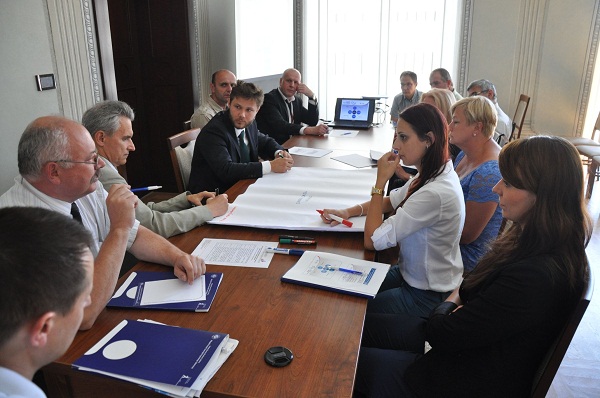
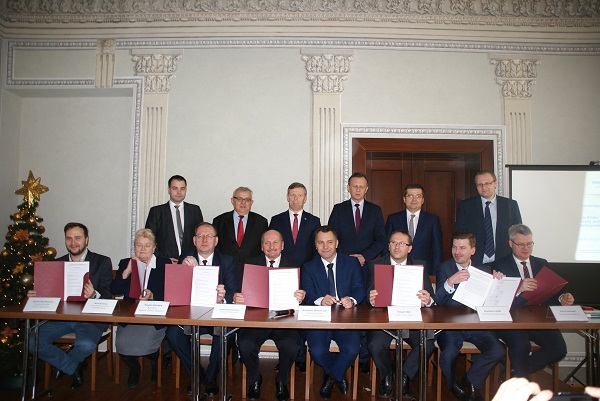
Project Leader: Gmina Skawina
Partners: Gminy: Czernichów, Mogilany, Liszki i Świątniki Górne a także Powiat Krakowski oraz Uniwersytet Rolniczy w Krakowie, Galicyjska Izba Gospodarcza, Podkrakowska Izba Gospodarcza i Lokalna Grupa Działania „Blisko Krakowa”.
Duration: 04-02-2014 - 30-04-2017
Project value:2 580 222,73 zł
Website: www.razembliskokrakowa.pl
Project results:
Main actions of the project included: carry out a range of activities, including studies, analyzes and meetings that have enabled the preparation of a strategy to describe the directions of development in five communes. Within this activity, the Integrated Development Strategy for Functional Area "Near Cracow" was developed, which is a planning document defining the most important areas, objectives, directions of development and tasks, as well as methods of verification of achieved development policy results in the functional area. Next preparation of detailed development strategies in the following thematic areas: education and the labor market, development of civil society, environmental protection and recreation. It was followed by the preparation of technical documentation for the projects specified in the aforementioned strategies that can be grouped into the following categories: environmental protection, transport, economic areas - development of investment areas, public space conditions improvement. As a result of the project implementation, among others. by developing strategic documents and technical documentation, the Partnership is well prepared to apply for funding from the new 2014-2020 European Union perspective or from other sources. A significant part of the project products enabled the Partners to apply for external funds e.g. from the Regional Operational Programme of the Malopolska Region. In some cases, a decision has already been made to co-finance the tasks that will be carried out using the documents developed in the project.
Future of the Partnership:
The implementation of the project has improved the ability of co-operation between Partners, who plan further joint ventures, to identify and solve problems in the Functional Area "Together Near Cracow". The new commune (Zabierzów) joined the Partnership. As a result of the development of the whole area, the signing of a declaration on the continuation of the partnership cooperation project was signed at the project conclusion conference. The signed agreement is a confirmation of the will to work in a solidarity and equal partnership of 6 communes and Cracow County. Within the framework of the signed agreement, cyclical meetings of employees are held in various subject groups. Work groups (in the fields of: promotion, air protection and flood protection) have been set up to date. The implementation of the project and the cooperation of its Partners also resulted in the extension of the Local Action Group "Near Cracow" by two new communes: Liszki and Zabierzów.
Kościerzyna Economic Activity Zone – preparation of the strategic as well as technical and cost estimate documentation
The implementation of such a large partnership programme showed that, as a result of the cooperation and systemic efforts, we have much more to offer than many other regions, especially in respect of tourist or economic values. The implementation of the project made us fully aware of the fact that we form a single, cohesive, functionally related area, we have common problems and we can solve them by means of joint efforts. Our residents or entrepreneurs are not limited by administrative boundaries of communes. They expect local authorities to apply effective and durable solutions to improve the quality of life and functioning as well as the development prospects. The undertaken efforts are also supposed to be a clear signal for our residents, especially young people, who often decide to move to other centres or abroad, to see their future in this region and stay here. In the longer term, joint efforts are the only way we can ensure the permanent development of the subregion, the improvement of the level of public services, the quality of the residents' lives and the functioning of enterprises. During the works, there naturally appeared differences of opinions and conflicts of interests. That is why the key values include regular meetings of the Partnership members, without whom it would be impossible to work out common goals for these efforts and to manage the challenges that we face - Michał Majewski, Mayor of Kościerzyna
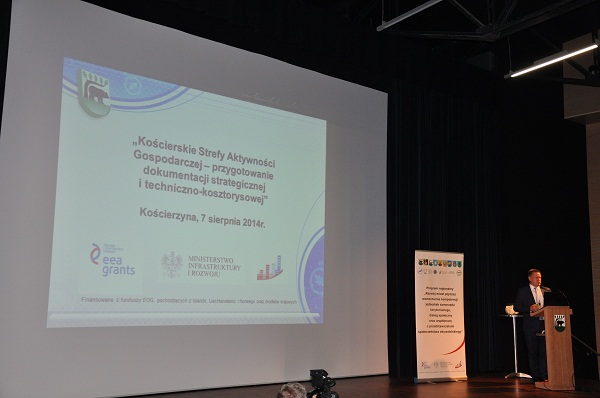
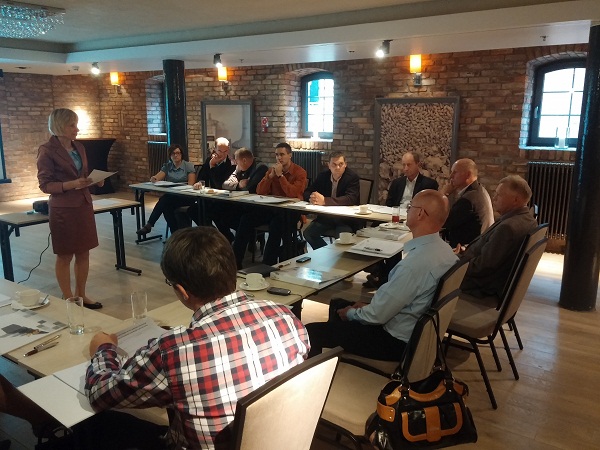
Project Leader: Gmina Miejska Kościerzyna
Partners:Powiat Kościerski, Gmina Kościerzyna, Gmina Dziemiany, Gmina Karsin, Gmina Stara Kiszewa, Gmina Lipusz, Gmina Liniewo, Gmina Nowa Karczma, Kaszubski Instytut Rozwoju, Lokalna Organizacja Turystyczna „Serce Kaszub”, Stowarzyszenie Przedsiębiorcy Kościerzyna, Pracodawcy Pomorza Oddział Gdańsk, Pracodawcy Pomorza Oddział Kościerzyna, Regionalna Izba Gospodarcza Pomorza, Pomorski Zespół Parków Krajobrazowych.
Duration: 30-01-2014 - 30-04-2017
Project value:2 692 996 zł
Website: http://koscierzyna.gda.pl/portal?id=1410864
Project results:
In order to solve the priority problem that occur within the area of the Partnership: entrepreneurship combined with energy efficiency and the deployment of RES, the Project covered activities such as the preparation of necessary strategic and operational documentation, feasibility studies, technical and cost estimate documentation for Kościerzyna Economic Activity Zones linked by transport infrastructure and supported by upper-secondary education adjusted to the labour market, which are to be ultimately created. The activities covered also the development of the Institutional Partnership Development Plan and the Communication and Social Consultation Plan strengthening the Partnership. Based on this documentation, the Partnership will take up activities aimed at the creation of Kościerzyn Economic Activity Zones related to services and industry, supported by the adjustment of the education system and transport infrastructure. The purpose of the zones will be to develop the Functional Area in social and economic terms, with the full exploitation of its environmental potential, to revive entrepreneurship, including innovative activity, also with respect to the use of RES, as well as the social and economic activation of residents. The key element of the project was to develop a complete technical and cost estimate documentation for 7 Economic Activity Zones that are planned to be created within the KFA. The zones will be located in: Kościerzyn, Kłobuczyn, Grzybów, Nowa Karczma, Lubań, Liniewskie Góry, as well as in the area of Wdzydze Lakes – 5 tourist subzones within Dziemiany, Karsin, Stara Kiszewa, Lipusz and Kościerzyn communes. The project covered also the preparation of technical documentation related to transport links to economic zones as well as a cycling infrastructure connecting tourist zones in the area of Wdzydze Lakes. Project documentation related to the adjustment of upper-secondary school programmes was also compiled. In order to support the local tourist industry and promote the KFA, an IT system for the support of business and tourist service with the use of a mobile application was implemented. The compiled documents will became a basis for the initiation of investment projects supporting the development of the KFA and the application for external funds.
Future of the Partnership:
The establishment of the KFA Partnership is a breakthrough for the cooperation between the local governments of Kościerzyn district, which have never undertaken joint activities performed in such a wide circle and to such a great extent. The implementation of the project influenced the development of the cooperation between the local governments of Kościerzyn district and social partners. After the conclusion of the project, the members of the partnership still cooperate with each other, performing various tasks in which individual interested partners get involved. Further activities of the Partnership cover the areas of economic activation and the joint development of the tourist potential. Economic development based on the exploitation of the potential of RES must take into account tourist values and rural areas – that is why the development of economic activity zones, together with the improvement of the transport infrastructure, is the main goal of these efforts. The cooperation between social organisations, entrepreneurs and education units will make it possible to adjust the vocational education offer to the requirements of the labour market, taking into account the existing economic development trends in the region. The working team's work on the development of the concept to obtain the status of a health resort or a health resort area for this land. It was possible to undertake this task, already outside the European Economic Area, as the partners have worked out cooperation methods and gained necessary trust. Further activities cover the implementation and use of the integrated IT Business Support and Tourist Service System as well as a Virtual Tour around the KFA. This is one of the pillars for the development of integrated tourist products in cooperation with LOT Serce Kaszub, which allow for the further development of the offer of local entrepreneurs. The common area for future cooperation includes the common promotion of created economic zones and the entire KFA (tourism, common tourist products, calendar of events). It was agreed that, project activities in the area of tourism and promotion will be continued by Serce Kaszub – the Local Tourist Organisation, and in the area of entrepreneurship – by the Kashubian Development Institute (Kaszubski Instytut Rozwoju). Both entities are social partners of Kościerzyn Partnership for Social and Economic Development. Both institutions adopted relevant resolutions in this respect.
Ostródzko-Iławski Functional Area
Inter-governmental cooperation is essential in order to improve the quality of public services. Thanks to it we are able to develop our communities and improve the quality of life of our residents – Czesław Najmowicz, Mayor of Ostróda, Project Leader
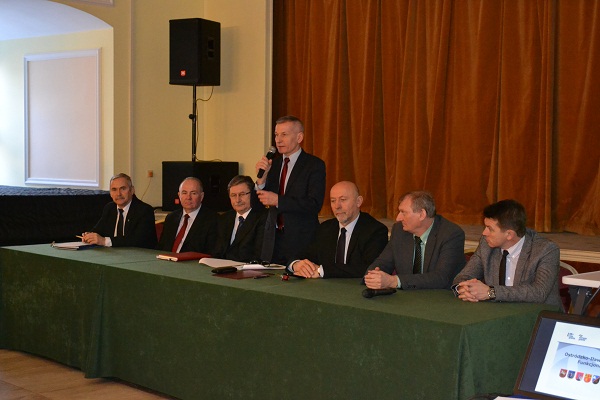
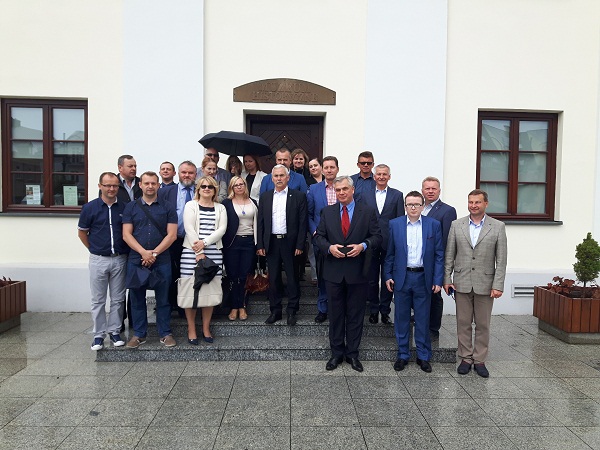
Project Leader: Gmina Miejska Ostróda
Partners:Gmina Miejska Iława; Gmina Ostróda, Gmina Iława, Gmina Morąg, Gmina Miłomłyn, Powiat Ostródzki; Partnerzy Wspierający: Stowarzyszenie Łączy Nas Kanał Elbląski – Lokalna Grupa Działania z siedzibą w Elblągu; Iławska Izba Gospodarcza, Cech Przedsiębiorców i Pracodawców z siedzibą w Ostródzie, Rada Organizacji Pozarządowych Powiatu Ostródzkiego, Rada Organizacji Pozarządowych Powiatu Iławskiego, Związek Stowarzyszeń ”Kraina Drwęcy i Pasłęki”.
Duration: 04-02-2014 - 30-04-2017
Project value:2 638 590 zł
Website: http://ostroda2012.pl/pl/aktualnosci/ostrodzko_ilawski_obszar_funkcjonalny/830
Project results:
The aim of the project was to achieve greater social and economic cohesion of territorial units forming the Ostroda-Ilawa Functional Area by developing mechanisms of effective co-operation between local governments, NGOs and entrepreneurs to make joint decisions concerning the Area and solve the problems that are relevant to them. The partnership has been established between Ostroda Municipality, Ilawa Municipality, Morag Municipality, Milomlyn Commune, Ostróda Commune, Ilawa Commune, District Ostróda and non-governmental organizations. Integrated Strategy for Socio-Economic Development Ostróda-Iława Functional Area for the years 2015-2025 was developed, providing a range of integrated measures to address the problems identified in the diagnosis of the functional area. All projected products and results have been achieved and strategic documents have been developed as well. As a result of the project implementation, a total of 24 design and planning documents were developed to support the socio-economic development of the area. The design documents concerned the development of investment areas, the modernization of county roads and the construction of bicycle paths. Some of the developed projects have already been implemented. The developed documentation also helps in obtaining funds from European Funds.
Future of the Partnership:
The implementation of the Project directly contributed to the establishment of cooperation in the partnership. It is prudent to expand the functional area with new local governments. There are taken actions to implement joint projects, organize training and collaborate in developing project documentation, taking into account partners' intentions.
Socio - economic development of Oder Municipalities
The main beneficiaries of the project are the inhabitants of the Functional Area. As a result of the achievement of the objectives of the project, they have easier access to information and shorter time to deal with formal and legal matters related to their activities and can plan their actions based on the future investment intentions of the Partnership included in the planning documents - Bogusław Kuta, Project coordinator

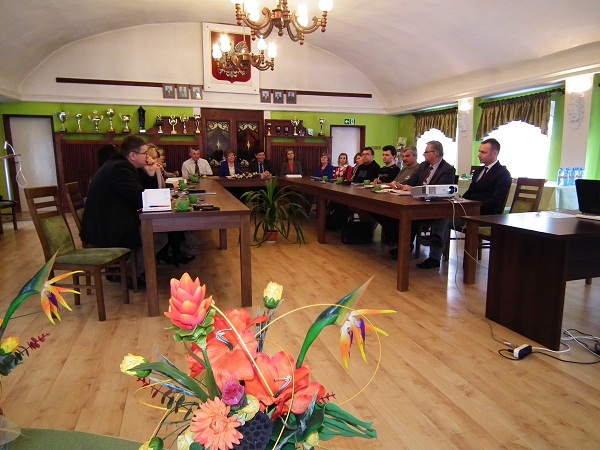
Project Leader: Gmina Czerwieńsk
Partners: Gmina Sulechów, Gmina Dąbie, LFC sp. z o.o., Stowarzyszenie Turystyczno Motorowodne „Odra Czerwieńsk”, Stowarzyszenie Mieszkańców Lasek
Duration: 12-02-2014 - 30-04-2016
Project value:1 788 400 zł
Website: www.eog.czerwiensk.pl
Project results:
The project’s objective was to develop a model of operation for the Partnership of the Oder Municipalities which will allow the implementation of undertakings contributing to the social and economic development of the Functional Area and the enhancement of local community links. The consequence of the project implementation is the preparation of the above mentioned strategic and planning documents and technical projects of enterprises which will allow the effective use of the developmental tourist and economic potential of the areas in the Oder basin, thus laying the foundations of future investments made by the Partnership. The joint development strategy for the areas located in the Oder basin will allow to use a large tourist and economic potential of the Oder basin area, guaranteeing availability of the tourist products in the area, reorganizing the technical infrastructure in the areas of water supply, sewage disposal and transport in the Functional Area, creating a joint tourism development programme in the Functional Area, enhancing local community links and developing the local identity of the population of the Oder Municipalities.
Future of the Partnership:
As a consequence of the achievement of the project objectives, there are prospects for further cooperation. An important element of cooperation is the discussion of the Leader with the Local Government Partners in order to create a budgetary unit acting as a Shared Services Center. Discussions on joint provision of education, social welfare and sport services and the formation of a joint team responsible for urban planning, planning and strategic development of the functional area are currently under way.The idea of the Oder Municipalities Partnership is "Together We Can Do More" and “The larger you are, the more you can achieve”. It emphasized the role of the project as a breakthrough in the way of thinking in the strategic management context.
Strengthening Social, Territorial and Economic Cohesion in Functional Area of The Jan III Sobieski Trail in Lublin voivodeship
The project has taught us to adopt a partnership approach to a lot of self-government issues. As leaders of our communities, we have been convinced that being open to external cooperation, we gain on implementation of projects inside communities. Furthermore, we could look at our area from the residents’ point of view. The social participation has shown that residents of a given commune are also willing to take advantage of the assets of neighbouring communes. Development plans should, therefore, focus on lacking investments in the whole area of The Jan III Sobieski Trail, not on repeated and competing ones – Michał Cholewa, Mayor of Piaski
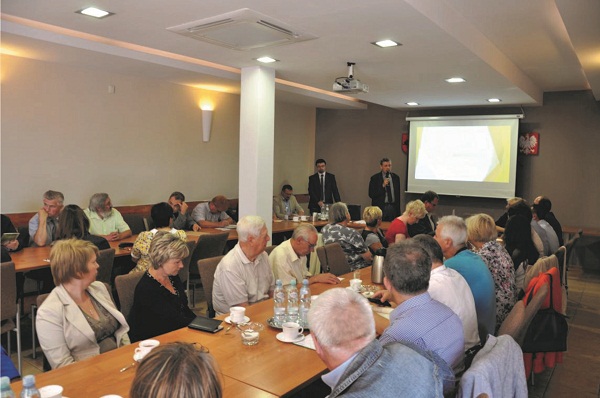
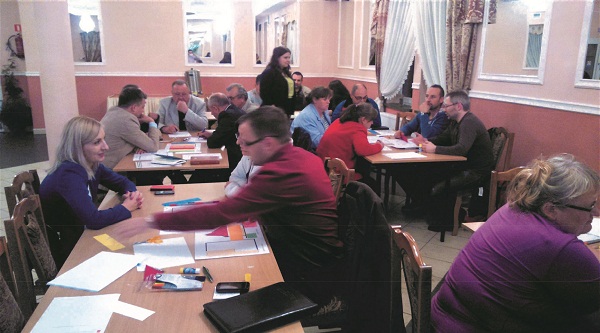
Project Leader: Gmina Piaski
Partners: Gmina Wólka, Gmina Spiczyn, Gmina Łęczna, Gmina Ludwin, Gmina Milejów, Gmina Mełgiew, Gmina Krasnystaw, Miasto Krasnystaw, Gmina Gorzków, Gmina Rybczewice
Duration: 30-01-2014 - 30-09-2016
Project value:2 643 240 zł
Website: www.ofszlaksobieskiego.pl
Project results:
The objective, set at the beginning of the project, was to develop and test standards which may increase cooperation in social, territorial and economic aspects. In the first stage of the project the documents were created: ‘Integrated Development Strategy OF The Jan III Sobieski Trailin Lublin voivodeship’ and three operational plans for development of processing, tourism and power industry. At the very beginning the strategic documentation was prepared by representatives of local communities; residents, NGOs, entrepreneurs and local governments. In each of 11 communes consulting meetings moderated by experts were held. Work on the strategy was carried out in working groups of several people (there were 6 meetings concerning social, territorial and economic cohesion and 6 meetings concerning development of processing, tourism and power industry). Two-way social participation (consultation and working groups) created an opportunity for testing innovative approaches such as: planning for real, charette, participatory planning and future planning. A model of good consulting practice was developed, which may be implemented by other enterprises. The long-term effects of the project are technical documentations of key investments in individual communes. Investments based on the documentation are currently in progress in several communes. In selection of undertakings not only the plans of local governments were taken into consideration but also the suggestions of residents of FA of The Jan III Sobieski Trail. Projects, which were prepared for realization, meet the cultural and tourist, renewable energy sources needs of the communes.
Future of the Partnership:
The project realization hasconsiderably influenced the partnership collaboration between 11 local governments. Positive experience gained in the implementation of joint undertakings resulted in mutual information exchange and cooperation in other areas, also outside the project. The leaders/mayors of 11 counties decided on the continuation of partnership in a formalized way – an association of communes was formed – The Association for Strengthening the Cohesion of Functional Areas of The Jan III Sobieski Trail.The Association collaborates closely with the foundation established to support the development of enterprise on The Jan III Sobieski Trail. Thanks to that, standards of partnership cooperation developed during the project, which was co-financed by Island,Lichtenstein and Norway from the Financial Mechanism EOG funds, are implemented in social, territorial and economic areas
Bydgoszcz and Toruń Partnership for sustainable transportation
Participation in the project allowed us to carry out design documentation for bicycle lanes and in the following years inhabitants of Toruń district will see specific effects of participation in the partnership. Cooperation has allowed us to look at concrete problems from the perspective of our neighbors. It was considered important to develop uniform standards for document preparation and investment implementation – Mirosław Graczyk, District Governor of Toruń District
The most important fact is that the final product of the project would not be lying on the shelf. "Study of ..." has already become an element of the Strategy of ITI, and its fruit – i.e. design documentation – will be implemented from the ITI funds. I want to emphasize the participation of residents in the social consultation on the draft document so that the investment will correspond to their needs. The Kujawsko-Pomorskie voivodeship is one of the most dynamically developing regions in the country and it is essential to create an area with good commute – Andrzej Rakowicz, Deputy Mayor of Toruń
Thanks to the partnership that worked in practice, it was possible to implement the project, resulting in hundreds of pages of "Study of ..." diagnosing problems, suggesting actions and setting the paths for investment implementation. Thanks to the project we learned a lot from each other. We could confront our competences, capabilities and practices. We have seen how many common problems we have, but also that they can be approached differently. We learned the compromises, tolerance and perspective of the partner - Marcin Kowallek, Director of the Municipal Services Department of the City of Toruń
Cooperation between the Leader and Partners is very good, despite the sometimes divergent interests of individual local governments. Experience from joint activities in this Project will be valuable for other joint projects implemented by cities and districts in the functional area of the Partnership - Zbigniew Łuczak Deputy District Governor of Bydgoszcz District
Study of ..." became the nucleus of the ITI, it was the base for the creation of the ITI Strategy in the development of all branches of transport - Maciej Gust, Acting Director of Road Investments of the Board of Public Roads and Public Transport in Bydgoszcz
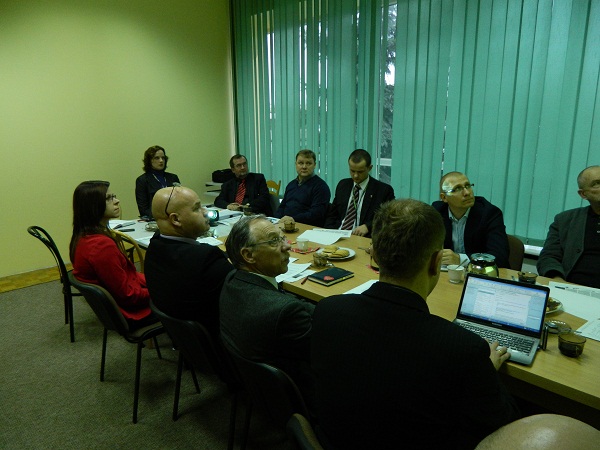

Project Leader: Gmina Toruń
Partners:Miasto Bydgoszcz, Powiat Toruński, Powiat Bydgoski, Stowarzyszenie Inżynierów i Techników Komunikacji Rzeczpospolitej Polskiej Oddział w Toruniu, Stowarzyszenie na rzecz rozwoju transportu publicznego w Bydgoszczy.
Duration: 17-02-2014 - 30-04-2017
Project value:2 693 000 zł
Website: www.bydgoskotorunskiepartnerstwo.pl
Project results:
The aim of the project was to achieve greater social and economic cohesion of the functional area by developing mechanisms for effective cooperation between local and regional authorities, civil society and non-governmental organizations in order to make joint decisions on the sustainable development of transport systems. This goal was achieved through the work on " Study of sustainable development of transport systems of Bydgoszcz and Toruń districts with a special focus on the cities of Bydgoszcz and Toruń", which was consulted with the public during a large-scale social consultation process. Study of ..." is a basic document in the field of transport development for the implementation of the Integrated Territorial Investments for the Bydgoszcz-Toruń Functional Area (ITI). The design documentation for the construction of bicycle paths in the BTFA and bus-lanes in Bydgoszcz will also be used within the framework of the ITI, the investments for which the documentation was prepared will be built with ITI funding. Participation of inhabitants in the consultation of the document "Study of ..." allowed to develop project documentation for the investment corresponding to their needs.
Partners have jointly selected the investments for which the design and cost estimate documentation was prepared. The implementation of these investments will ultimately contribute to the improvement of functioning of transport systems in the area of the Partnership while also being a direct response to the identified transport problems.
Future of the Partnership:
Project partners being territorial local government units cooperate in the implementation of the Integrated Territorial Investments for the Bydgoszcz-Toruń Functional Area since April 2014. This cooperation also includes Munhicipality of Nakło nad Notecią, Municipality of Kowalewo Pomorskie and municipalities from Toruń and Bydgoszcz districts. In addition, Partners exchange experiences in various fields. Partners have gained more trust towards each other and improved cooperation, which is still developing in different areas.
Uniform Territorial Strategy = coherent functional area of the Mikołów County by strengthening mechanisms of effective cooperation
The leaders of modern local government management, setting the prospective development goals of their units, see the need to evolve beyond their own area, putting the co-operation between local and regional government, both in terms of investment and social matters. This cannot be done without a coherent strategic document.Having developed such a complex of documents as The Uniform Territorial Strategy, that expresses the aspirations of local authorities of the Mikołów County, that means same as local authorities and leading social, professional, political, age and other groups and identifying the directions of action for present and future organizations and councils, we can start to reach the goals which the self-government communities aspire, and through which the current state will transform to the one in the project. We assume that over the years the documentation as a long-term plan of self-governments will be the driving force behind the development of the functional area and the basis of social acceptance for the results achieved - Marek Popek, Secretary of District
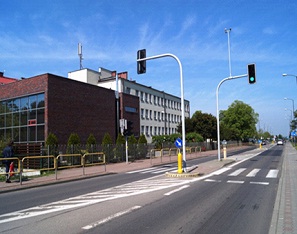
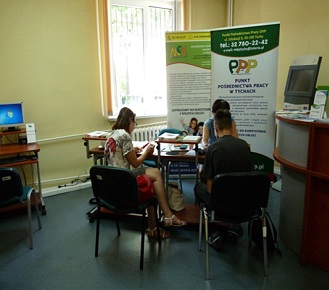
Project Leader: Powiat Mikołowski
Partners: Miasto Mikołów, Miasto Łaziska Górne, Miasto Orzesze, Gmina Wyry, Gmina Ornontowice
Duration: 29-06-2015 - 30-04-2017
Project value:1 705 163 zł
Website: http://jst.mikolowski.pl/
Project results:
The joint work of the Partners and all interested non-governmental and economic organizations, as well as representatives of local communities, including local leaders and external experts, has allowed the following documents to be formulated: Integrated Development Strategy for the functional area of Mikolow County for years 2014-2020, Sub - strategy for formation of public space, Sub-strategy of implementation new information and communication systems in the functional area of the Mikołów County, Sub-strategy to counter the social exclusion, Sub - strategy to solve demographic problems, Sub-strategy for Local labor market, employment promotion and worker mobility, Sub - strategy - Protecting of the environment and Support of the resource efficiency, Sub- strategy – Promotion of sustainable transport and finding a remendy for shortages in the traffic capacity of key network infrastructures, Sub - strategy - Strengthening of institutional capacity and effectiveness of public administration, Sub - strategy- Promotion of the functional area and allowed a preparation of documentation for key investment.
Application of the results and products achieved so far and realization of the goals set will be possible in two ways. Both partners will be able to use the results developed in the strategic documents individually in their plans, projects and activities. At the same time, a number of indispensable, time-bound projects have been identified, that will be implemented in the partnership and will use the concrete solutions and effective mechanisms of cooperation, based on the interdisciplinary co-ordination teams set up for this purpose. Teams of representatives of each local government will coordinate the activities indicated in the areas adopted in the strategy documentation.
Future of the Partnership:
From the begin in 1999, the partnership of the municipalities forming the Mikołów County and the County itself are leading exemplary the partnership of self-governments and have accomplished many goals together. Joining the project The Uniform Territorial Strategy was a natural reaction and acceptance of the realization of this project by all 6 local government units. Today we already know what are our priorities for the development of the functional area and what is the "specialization" of our county. Joint interests and the belief that broadly understood co-operation in many fields of the functioning of self-governments gives much better results than the particular actions undertaken by individual local governments and creates a base for a positive look in the future, mainly in terms of sustainable development of the County in the foreseeable perspective.
